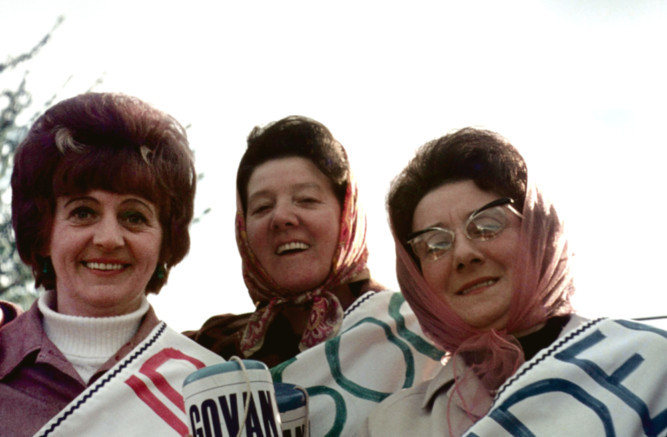
You have to be of a certain age to remember the “cludgie” and it’s not something anyone recalls with affection!
Indeed it’s hard to imagine that people ever lived without their own bathroom and toilet. But as recently as 40 years ago, they did.
Flushing toilets had been invented centuries earlier, and bathrooms in middle class homes had become the norm by the late 1800s.
Yet in Govan, Glasgow, and in many other parts of Scotland in the 1970s, families were still living with an outdoor toilet.
However, February 10, 1972, was to bring a revelation . . . with the arrival of Annie Gibbon’s loo.
Crowds gathered to watch politician Pat Lally (later to become the Lord Provost) make his way up to the third floor of 10 Luath Street to cut the ribbon and declare the first indoor toilet on the block officially open.
For 17 years, Annie, her husband and children, had lived in their room and kitchen, without an inside bathroom and with no hot water.
The tenement was set to be demolished for redevelopment. But when it was announced this wouldn’t happen for another 15 years, Annie decided to do something about it.
She rallied her neighbours and sought the help of architectural students at Strathclyde University who worked out a plan to build a bathroom into a bed recess.
Within a week of completion, more than 300 people had visited Annie’s loo and started campaigning for loos in their homes, too.
It signalled an important moment in Scotland’s social history, and a shift in housing policy in Glasgow.
And now Raymond Young, 67, one of the student architects, has chosen to chart it in a new book.
He said: “Annie’s loo was the start of the big campaign.
“It’s a 40-year story of the origins of Scotland’s community-based housing associations that helped save the city’s old tenements and bring them into the modern world.
“At the time, many of the tenement buildings were decaying and, despite indoor bathrooms being a standard requirement for all social housing built from 1919, during the 1970s thousands of families still lived in tenement houses without an internal bathroom.
“Many were demolished in place of high-rise flats. But there was a change in their fortune, with the realisation they could be improved with the likes of Annie’s loo.”
Sadly, Annie pased away a number of years ago. After his work with Annie’s loo, Raymond went on to spend the majority of his career in social housing.
“I was a student architect and instead of designing opera houses I thought why not work with local people and help them design their own environment?
“I’m retired now and have been writing the book for years. Now that it’s complete, I hope it will educate people on an important part of history.”
Annie’s Loo is published by Argyll Publishing, priced £9.99.

Enjoy the convenience of having The Sunday Post delivered as a digital ePaper straight to your smartphone, tablet or computer.
Subscribe for only £5.49 a month and enjoy all the benefits of the printed paper as a digital replica.
Subscribe